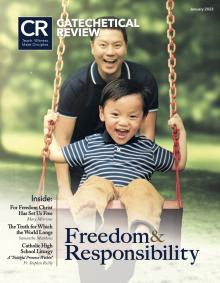The Theology of the Body (TOB) catechesis[i] culminates with profound teachings on responsible parenthood and a vigorous defense of Humanae vitae, but St. John Paul II equally proclaimed the depth and importance of the unitive aspect of marriage. In fact, nearly half of the TOB reflections are based directly on Jesus’ teachings on the indissolubility of marriage (TOB 1–23, based on Mt 19) and the monogamy of marriage (TOB 24–63, based on Mt 5). While emphasizing the inseparability between the procreative and unitive aspects, a key teaching of Humanae vitae, St. John Paul II also provided a profound way to understand the enormous personal value of unity for man and woman precisely as persons made in the image of God.
By highlighting the meaning of marital unity beyond the juridical level through his focus on the total self-giving and personal communion at the center of Christian marriage, he also gave us some clear criteria for understanding the essential difference between marital sex and premarital sex. This installment of the series describes that essential difference and why our theology says that couples must wait for marriage to begin their sexual life together.
[i] John Paul II, Man and Woman He Created Them: A Theology of the Body, trans. Michael Waldstein (Boston: Pauline Books and Media, 2006), hereafter cited parenthetically in text as TOB.
The rest of this online article is available for current Guild members.
This article is from The Catechetical Review (Online Edition ISSN 2379-6324) and may be copied for catechetical purposes only. It may not be reprinted in another published work without the permission of The Catechetical Review by contacting [email protected]


















